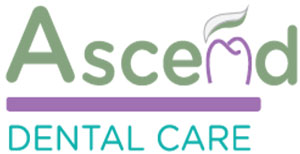Everyone wants whiter teeth, but not everyone has the same set of teeth. Your whitening experience can differ based on your patience, tooth sensitivity, and budget. By combining these three subjects, you can find your best whitening solution. However, there are some main things to know when talking about whitening your teeth.
First of all, most every form of whitening will increase sensitivity to your teeth. With that said, if your teeth are already sensitive, it will be very hard for you to get the whitening you want because it will cause discomfort. Another thing to consider is timing. It is best to do whitening in small doses over a long period of time, using a less concentrated formula. Also make sure to have a talk with your dentist before you do any whitening, because they might be able to guide you in the best direction for your health. With all of this on your mind, let’s start talking about your options.
- In-office whitening is usually always your best bet. The dental professionals know what they are doing and it usually only takes a 90 minute appointment to get instant results. The downside that can come with in-office whitening is the sensitivity. Sensitive teeth usually have a hard time completing this procedure because of the concentration amount in the formula used. Another step back for some could be budget, though every office charges a different price. It is definitely recommended to get a quote from your dentist.
- Custom whitening trays is a good option, if you can afford it. These custom trays form to your teeth to ensure that every section of your teeth get whitened. The good part of this method is the tray is reusable and can be used forever. The downside is they are very expensive to purchase, a good quality tray will usually start at $300 and go up from there. The gel solution comes in packs which you will have to rebuy. Again, this system is hard for those with sensitive teeth because of the concentrated gel.
- Whitening strips are definitely the low budget, quick and easy route. While they are cheap, they tend to work fairly well. The downside of strips is they often do not cover the entirety of the tooth. It can miss the section between teeth and the back of some teeth. Also if you have bigger teeth it could not cover all of them. Another part of strips is they are very bad for your gums. The chemicals in the strips can harm your gums if left on too long. Additionally, teeth sensitivity is another issue for whitening strips.
- Whitening toothpaste is hit and miss. Because of its very low concentration, it is perfect for sensitive teeth, it just takes a little longer. It is usually inexpensive and is very convenient because you use it every day no matter the circumstances, however you need to have patience for it to work.
- Natural remedies for teeth whitening are part of the DIY trend that has taken over the internet. Many of these treatments include things that you might already have in your house, making it perfect for those with a low budget. The main problem with this is some of the natural remedies are not always good for your teeth. They can break away the enamel and make your teeth very brittle. An easy, safe whitening trick is to brush your teeth with baking soda, after brushing with toothpaste. Also adding baking soda and lemon together to make a paste is a safe form of teeth whitening. Natural remedies are great for sensitive teeth, however they might not always work the way you expect them to.
It can be hard to determine which of these options is right for you. Consult with your dentist before trying any of these to ensure the safety of your teeth. If you have any questions or want to make a teeth whitening appointment, call us today!
